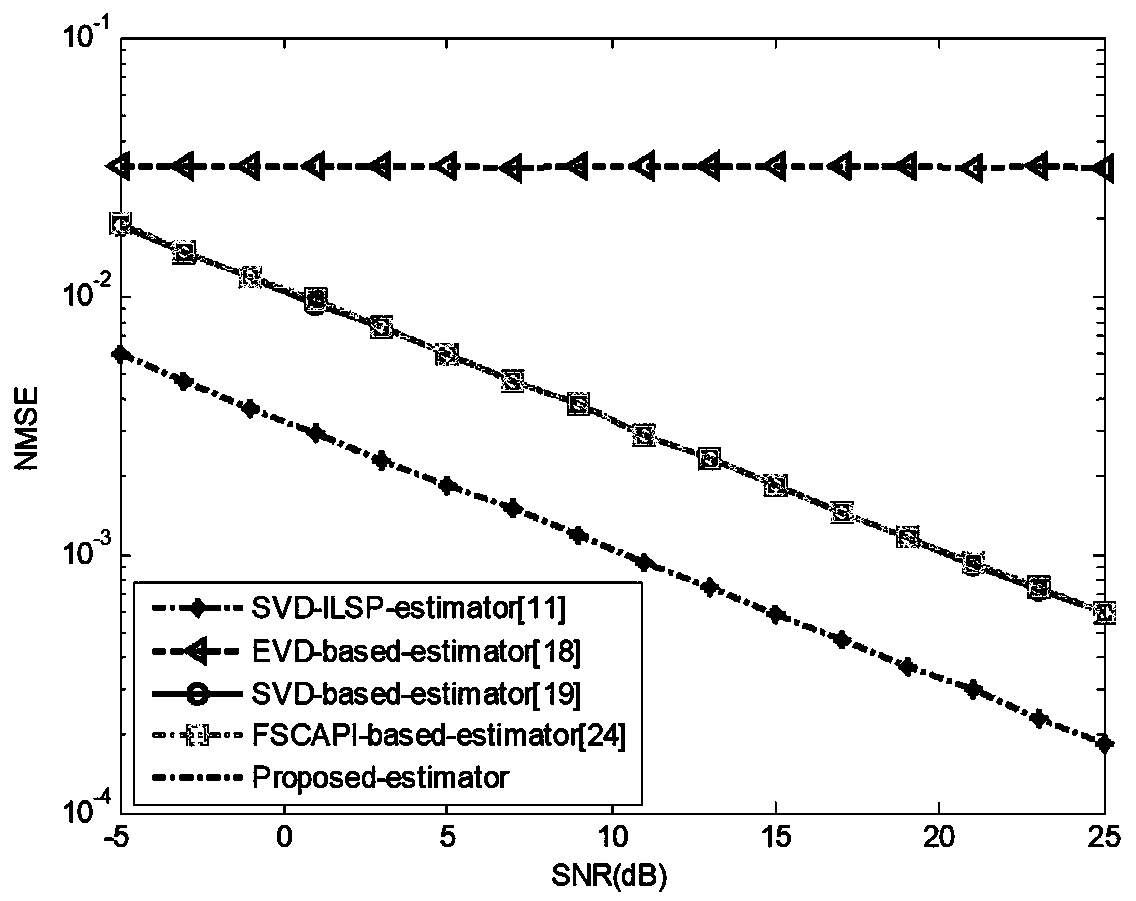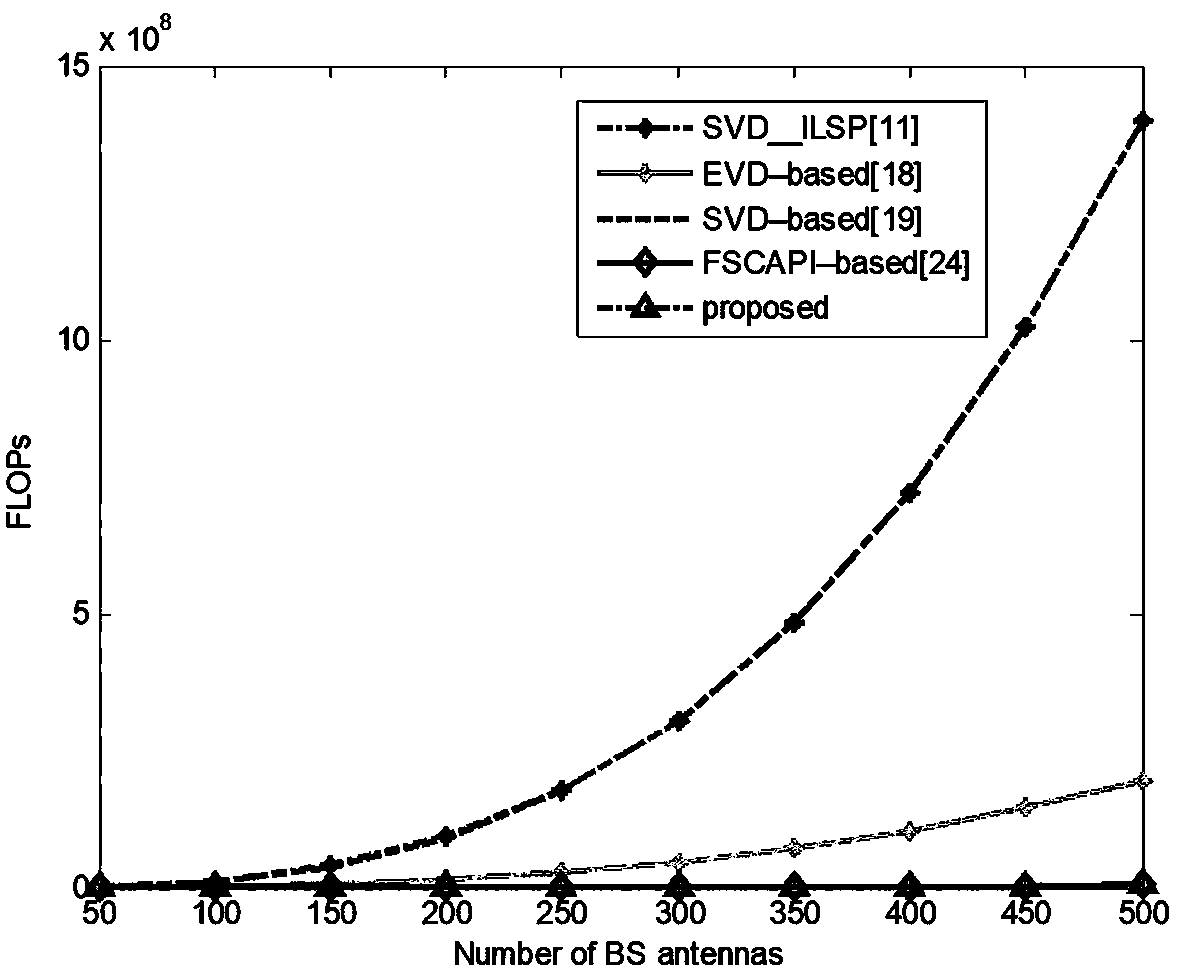A channel estimation method for a large-scale MIMO system
A channel estimation and large-scale technology, applied in the transmission system, radio transmission system, baseband system components, etc., can solve the problem of high computational complexity, achieve the effect of reducing computational complexity and accurate estimated values
- Summary
- Abstract
- Description
- Claims
- Application Information
AI Technical Summary
Problems solved by technology
Method used
Image
Examples
Embodiment Construction
[0046] Such as Figure 1 ~ Figure 3 Shown, the present invention comprises a kind of channel estimation method of massive MIMO system, and it comprises the following steps:
[0047] S1: According to the MIMO system model Using the received signal vector r to construct the sample covariance matrix The sample covariance matrix Approximate substitutions are made according to the following formula:
[0048]
[0049] Among them: r(t) represents the received signal at the base station at time t, N represents the number of samples, r represents the vector of the received signal at the base station, p u Represents the signal-to-noise ratio, G represents the channel gain matrix, s represents the transmitted signal vector, and w represents the noise vector;
[0050] S2: Sample covariance matrix Based on the traditional SVD or EVD decomposition, the following formula can be obtained,
[0051]
[0052] Among them: matrix R can be decomposed into R=[R s , R n ],R s repre...
PUM
 Login to View More
Login to View More Abstract
Description
Claims
Application Information
 Login to View More
Login to View More - R&D
- Intellectual Property
- Life Sciences
- Materials
- Tech Scout
- Unparalleled Data Quality
- Higher Quality Content
- 60% Fewer Hallucinations
Browse by: Latest US Patents, China's latest patents, Technical Efficacy Thesaurus, Application Domain, Technology Topic, Popular Technical Reports.
© 2025 PatSnap. All rights reserved.Legal|Privacy policy|Modern Slavery Act Transparency Statement|Sitemap|About US| Contact US: help@patsnap.com



